
As Presidential nicknames go, they don’t get much better than that of Andrew Jackson. He was dubbed “Old Hickory” after exhibiting his toughness during the War of 1812. And tough is an apt word to describe hickory. Its combination of hardness, stiffness, shock resistance, and density make it the toughest of the commonly available North American hardwoods.
While not as showy as some of the other more prized hardwoods, hickory is not without its aesthetic merits. The creamy yellow sapwood is reminiscent of birch and pine, but a lot more hardwearing. And the tawny brown heartwood compares with cherry before it ages. A lot of hickory flooring comes through with “calico” boards displaying a combination of sapwood and heartwood that adds a bit of down-home charm.
Where the wood comes from
A handful of species from the hickory and pecan family (genus Carya) are sold generically as hickory. True hickories such as shagbark are slightly stronger than those from the pecan side of the family, though the pecan-hickory species are more stable. But, as the species tend to be lumped together, the differences are moot. Essentially, if you’re after maximum strength, check the end grain for boards with wide growth rings. In hickory, faster growth makes for stronger wood. Hickory (and pecan) trees grow abundantly throughout eastern North America and are not listed on the CITES or IUCN Red List.
History in woodworking
This story is from the {{IssueName}} edition of {{MagazineName}}.
Start your 7-day Magzter GOLD free trial to access thousands of curated premium stories, and 9,000+ magazines and newspapers.
Already a subscriber ? Sign In
This story is from the {{IssueName}} edition of {{MagazineName}}.
Start your 7-day Magzter GOLD free trial to access thousands of curated premium stories, and 9,000+ magazines and newspapers.
Already a subscriber? Sign In
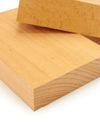
Beech
Plain looks, but a solid performer
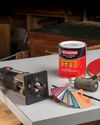
Working with PLASTIC LAMINATE
Adding a durable, smooth, and colorful surface to your work
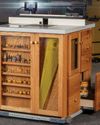
High-Tech ROUTER TABLE
A state-of-the-art shop essential
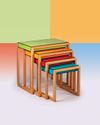
Albers-Inspired NESTING TABLES
A colorful array of Bauhaus utility

Desktop ORGANIZERS
Mini modules for your modern workspace
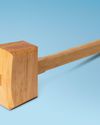
Joiner's MALLET
A hard-hitting shop hammer

Battery-backed biscuiting
DeWalt 20V Max XR Biscuit Joiner
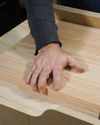
Crosscut SLED
A basic build of a crucial table saw accessory
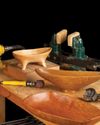
Power-carving BOWLS
Tools and techniques for sculpting

Library STEPS
Mitered box joints give rise to an updated classic